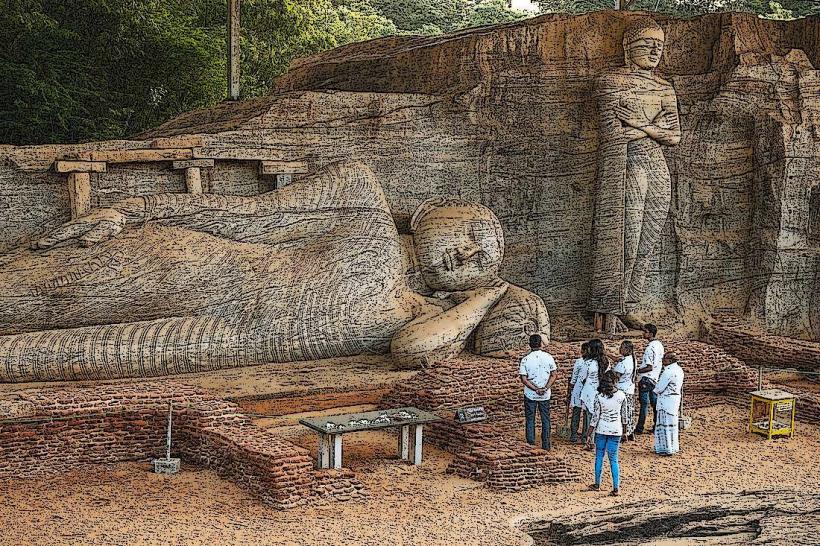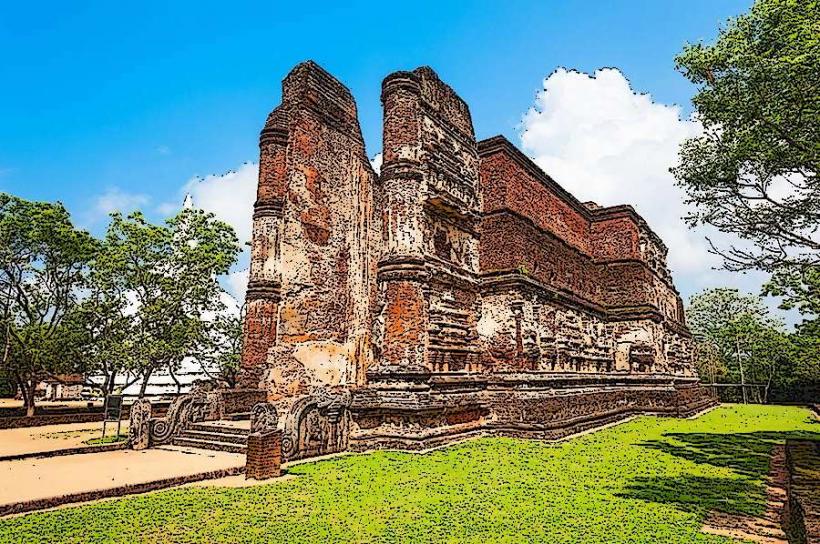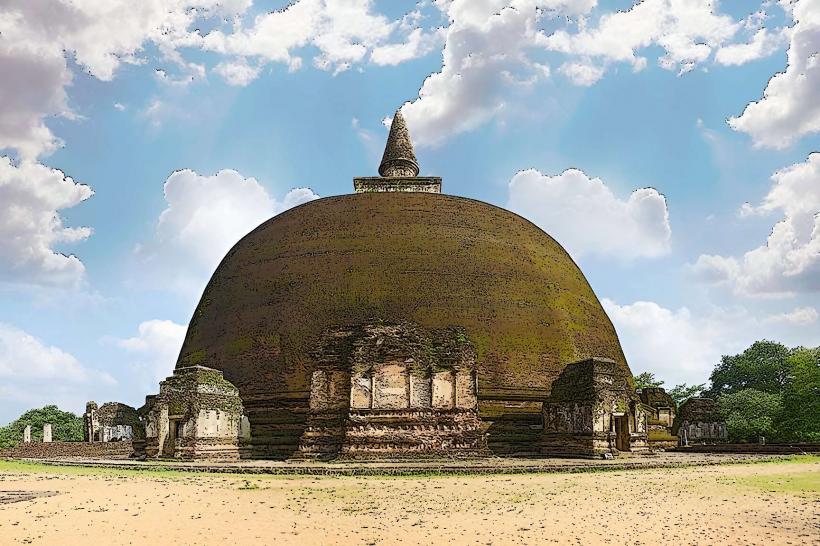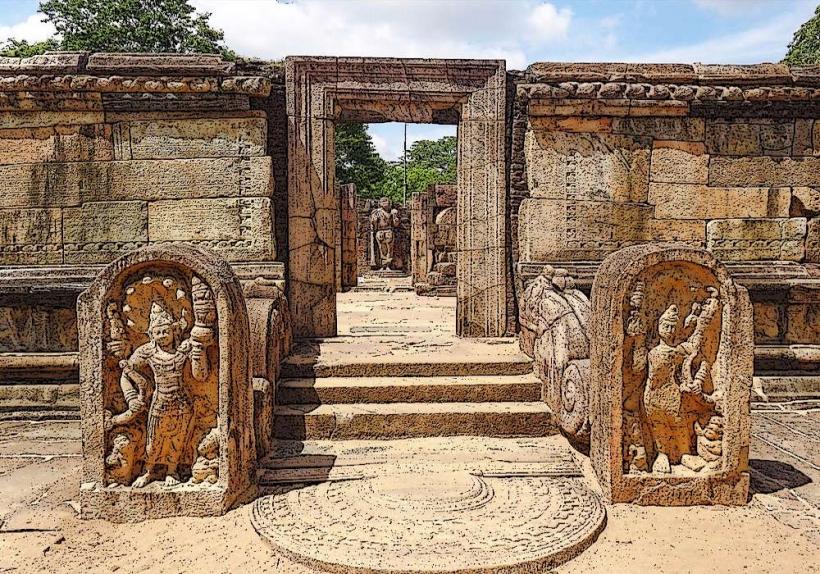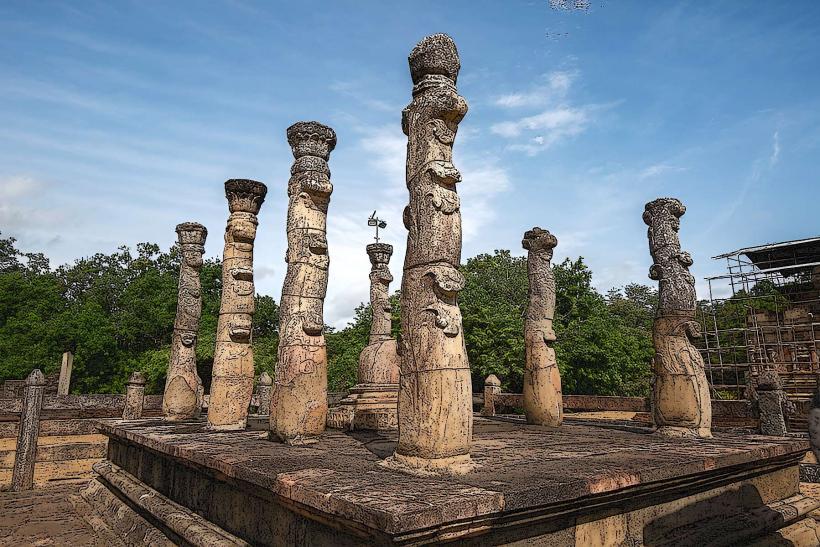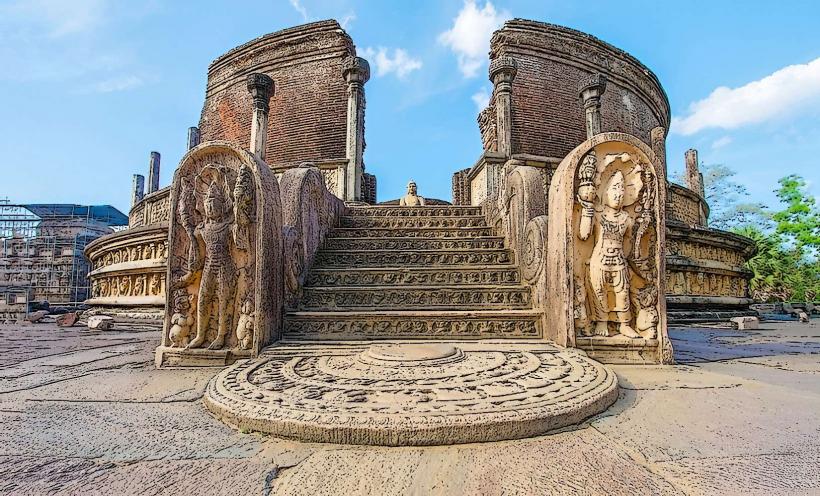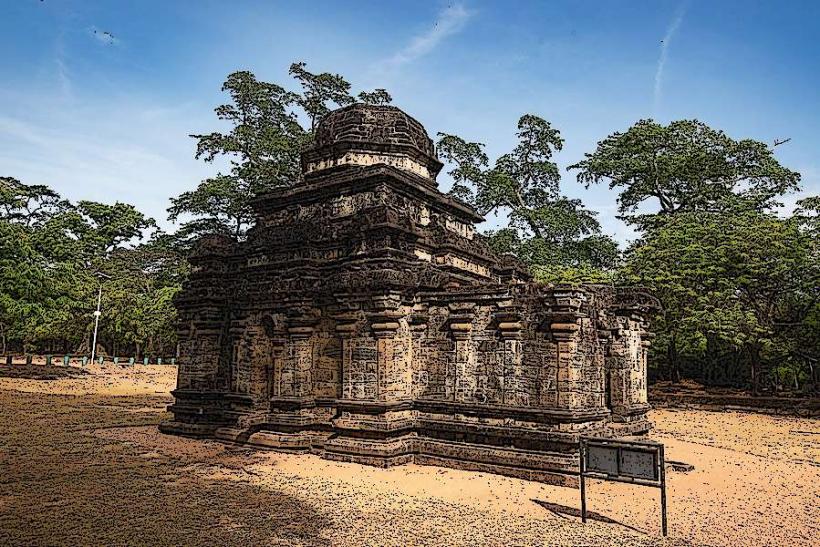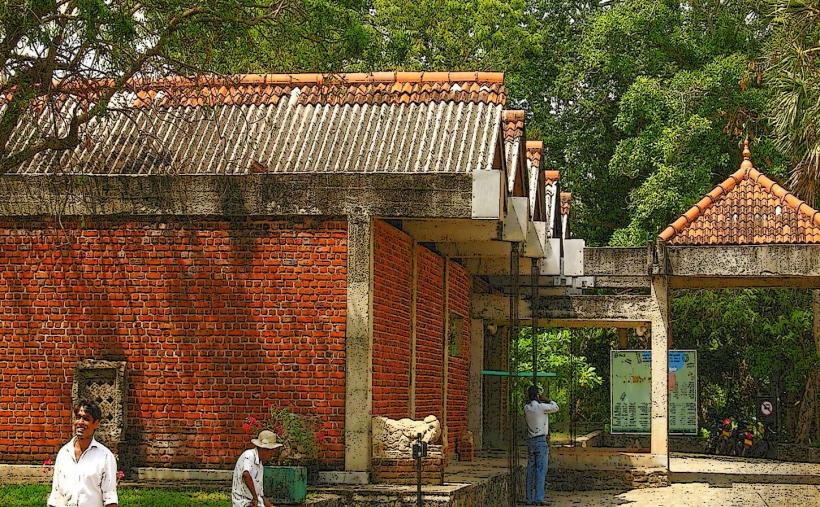Information
Landmark: Nelum Pokuna (Lotus Pond)City: Polonnaruwa
Country: Sri Lanka
Continent: Asia
Nelum Pokuna (Lotus Pond), Polonnaruwa, Sri Lanka
Nelum Pokuna (commonly known as the Lotus Pond) is one of the most iconic and historically significant landmarks within the Polonnaruwa Archaeological Site. The name "Nelum Pokuna" translates to "Lotus Pond" in Sinhalese, reflecting the unique design and aesthetic of this ancient pool, which is often associated with Lotus flowers. It is an exquisite example of ancient Sri Lankan architecture and engineering, showcasing the island's rich history of hydraulic technology and artistic innovation.
Overview
- Name: Nelum Pokuna (Lotus Pond)
- Location: Polonnaruwa, North Central Province, Sri Lanka
- Date: Built during the reign of King Parakramabahu I (12th century CE), one of the most prominent rulers of Sri Lanka's medieval period.
- Type: Ancient Water Tank / Reservoir / Pool
- Function: Decorative Pool, Water Management, Aesthetic Symbolism
Historical and Cultural Significance
King Parakramabahu I and Polonnaruwa’s Golden Age:
- Nelum Pokuna was constructed during the reign of King Parakramabahu I (1153–1186 CE), a ruler known for his innovative water management systems and contributions to architectural grandeur in Polonnaruwa. The pond is part of the King's extensive renovations and constructions in the city, which also included major temples, reservoirs, and gardens.
- Parakramabahu I is renowned for his hydraulic engineering expertise, and Nelum Pokuna was likely a symbolic feature within the royal gardens and palaces of Polonnaruwa, blending functionality with beauty.
Symbolic and Religious Importance:
- The lotus has strong symbolic significance in Sri Lankan and South Asian cultures, representing purity, enlightenment, and rebirth. As such, the Lotus Pond is believed to be a symbolic element within the royal grounds, evoking themes of spiritual renewal and natural beauty.
- The pond's design may have also had a ritualistic or ceremonial purpose, functioning as a location for royal bathing or other ceremonial uses tied to Buddhist rituals or royal court life.
Architectural and Engineering Feats:
- The Nelum Pokuna is a prime example of ancient Sri Lankan water management systems, which are celebrated for their engineering prowess. The pond was constructed with an intricate system of drainage and water supply, ensuring that it remained filled and functional throughout the year, even during the dry season.
- The pond is known for its circular shape, surrounded by stone carvings in the form of lotus petals, which appear to emerge from the water, forming a beautiful aesthetic element. The use of granite stone and meticulous carving gives the pond a sense of timeless beauty.
Key Features of Nelum Pokuna
Design and Architecture:
- The Nelum Pokuna is a round pond, measuring approximately 50 feet (15 meters) in diameter. Its center is surrounded by a ring of stone lotus petals, with smaller lotus petal carvings arranged in a circular pattern around the edge of the pond.
- The outer edges of the pond are decorated with finely carved stone lotus motifs. These stone petals rise from the water, enhancing the beauty of the pond while simultaneously serving as an architectural symbol of the lotus flower.
- The pond's edges are lined with finely crafted stone walls and pillars, further emphasizing its importance and royal association.
Water Management System:
- Like many other ancient tanks and ponds in Sri Lanka, Nelum Pokuna was designed with advanced water management systems. Channels or drains were constructed to regulate the water flow, ensuring that the pond stayed filled and functional.
- The use of water in the Nelum Pokuna highlights the importance of hydraulic engineering in Sri Lanka’s ancient kingdoms. Rainwater harvesting and irrigation systems were integral to sustaining the kingdom, and the pond was likely part of an overall water network used for irrigation, bathing, and aesthetic purposes.
Surrounding Gardens and Area:
- The Nelum Pokuna was originally part of a larger royal complex that included beautiful gardens and other architectural elements. The pond’s tranquil setting, surrounded by lush greenery, would have made it a serene and peaceful space for the royal family and their guests.
- The surrounding area likely featured royal pavilions, statues, and other decorations, creating a harmonious environment for relaxation and ceremonial use.
Visitor Experience
Architectural and Scenic Appeal:
- Visitors to Polonnaruwa can marvel at the intricate stonework and symmetry of the Nelum Pokuna, reflecting the advanced skills of ancient Sri Lankan craftsmen. The pond’s serene design and the lotus motifs create a peaceful atmosphere, inviting contemplation and appreciation of its beauty.
- The pond is one of the most photographed features of the Polonnaruwa Archaeological Site, particularly for its artistic design and historical significance.
Reflection of Ancient Culture:
- As one of the finest examples of royal water features from the Anuradhapura and Polonnaruwa periods, the Nelum Pokuna serves as a tangible reminder of Sri Lanka’s ancient culture, engineering brilliance, and artistic heritage.
- The lotus symbolism, the pond’s decorative elements, and the water management techniques provide insights into the spiritual, cultural, and technological advancements of ancient Sri Lanka.
Part of Polonnaruwa's Rich Heritage:
- The Nelum Pokuna is a highlight for those exploring the Polonnaruwa Archaeological Site, as it is part of a larger network of royal structures, temples, palaces, and gardens from the time of King Parakramabahu I. Visitors can experience a glimpse into the opulence of the ancient Sri Lankan court and the integration of nature and architecture.
Conclusion
The Nelum Pokuna (Lotus Pond) is an enduring symbol of Sri Lanka’s ancient artistic and architectural excellence. Constructed during the reign of King Parakramabahu I, it stands as a testament to the water management skills and aesthetic achievements of the time. The pond’s circular design, adorned with stone lotus petals, represents a blend of functionality and beauty that was central to royal life in ancient Sri Lanka. Today, it remains a key feature of Polonnaruwa’s archaeological landscape, offering visitors an opportunity to explore the rich history and cultural heritage of Sri Lanka’s medieval period.


